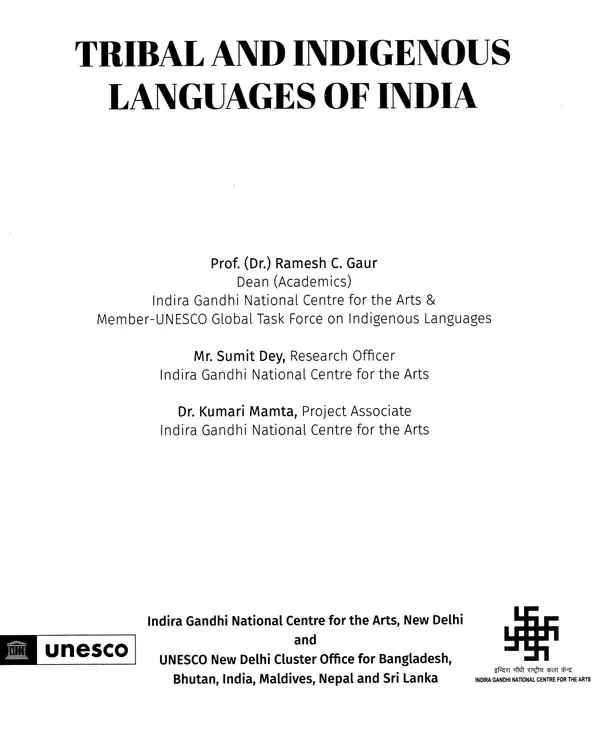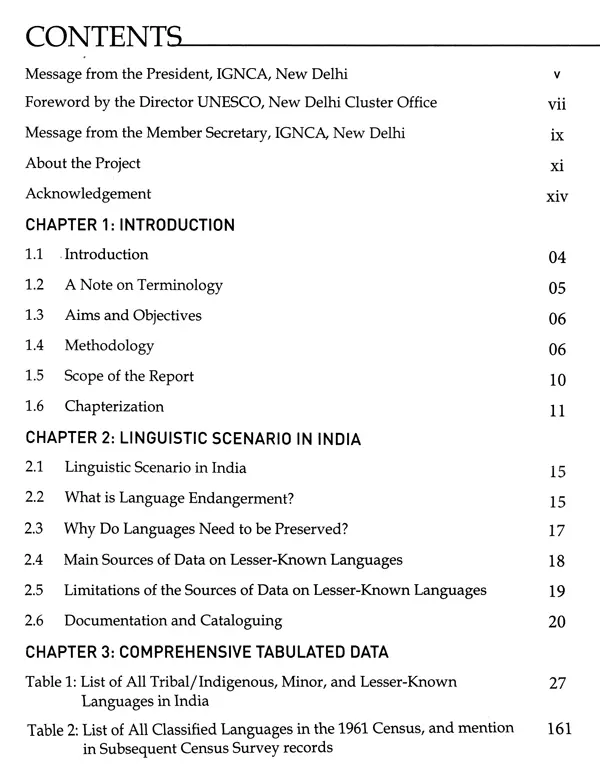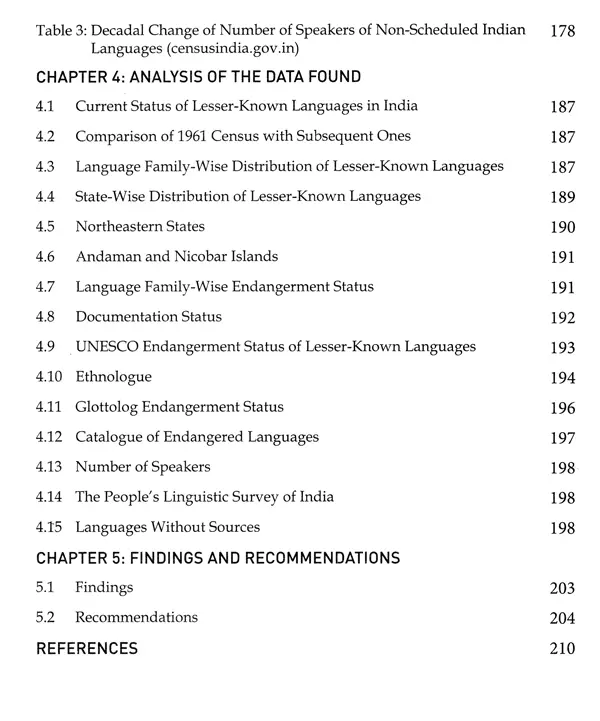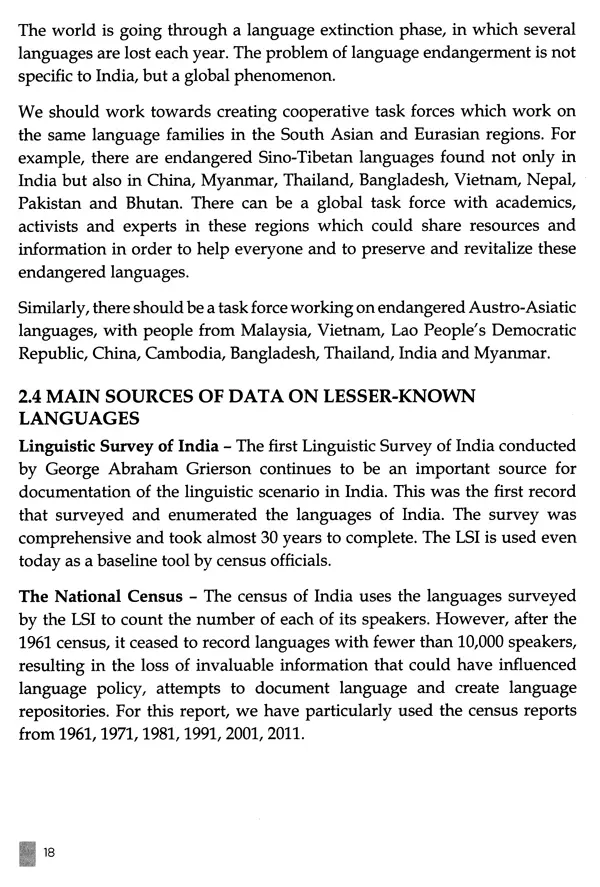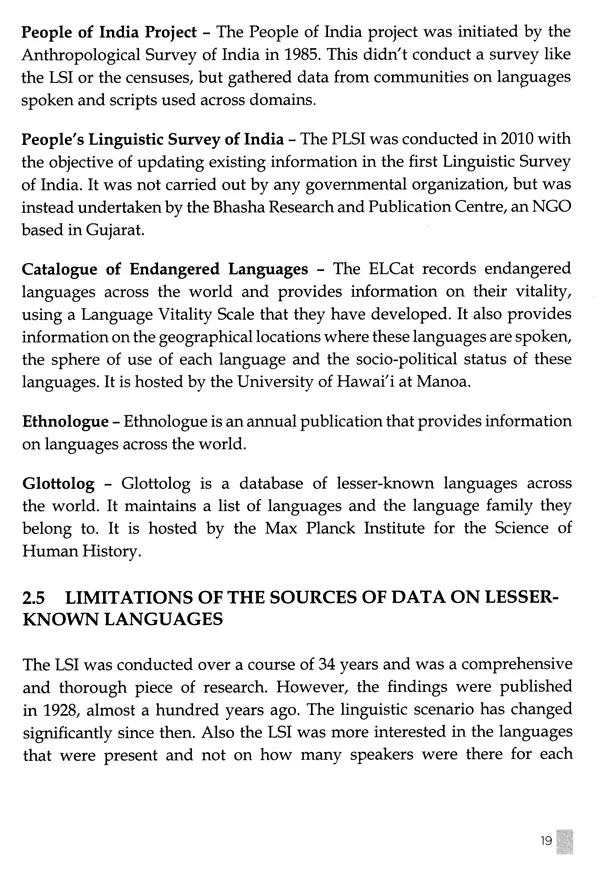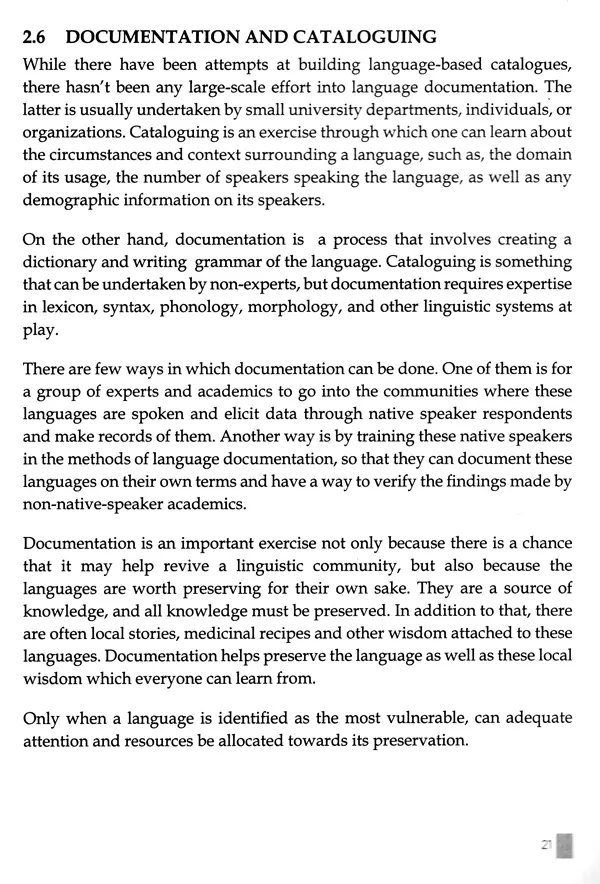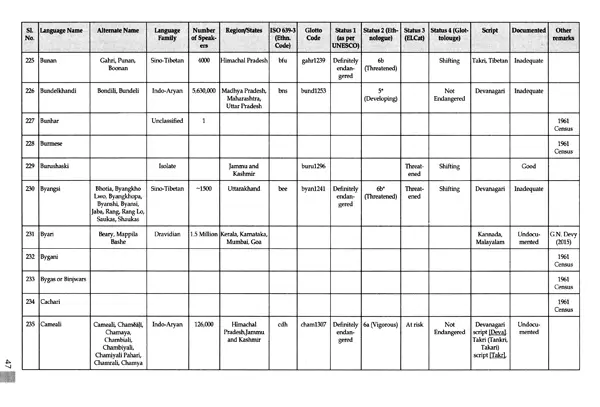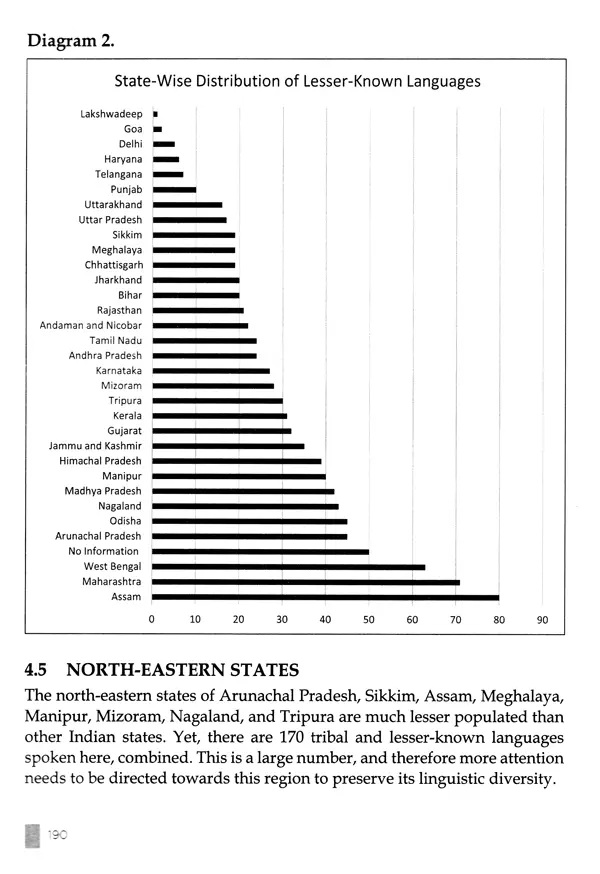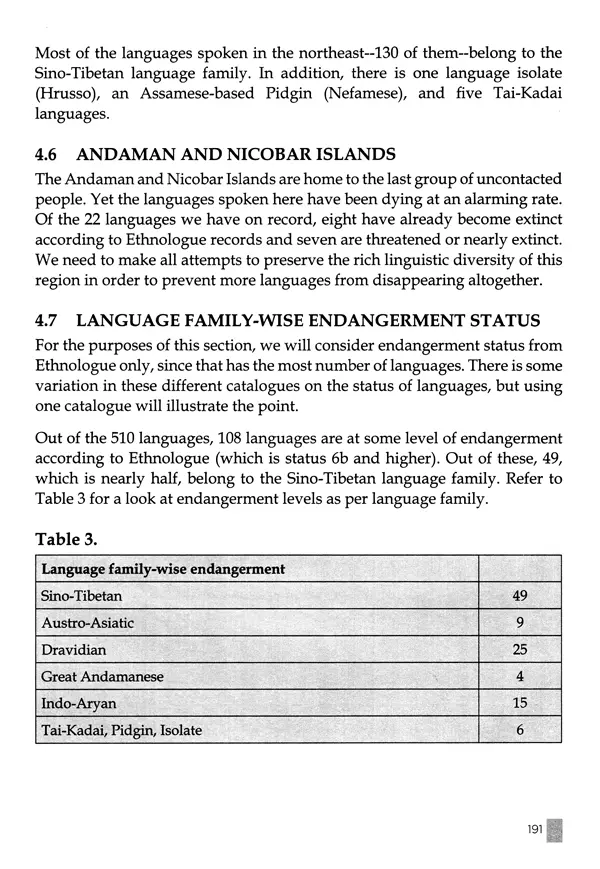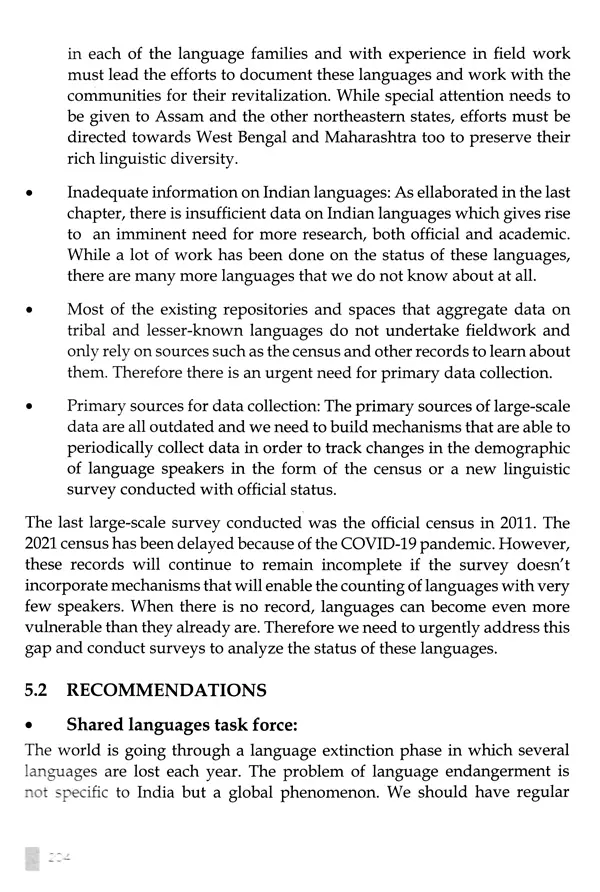
Tribal and Indigenous Languages of India
Book Specification
| Item Code: | UAT861 |
| Author: | Ramesh C Gaur & Sumit Dey & Kumari Mamta |
| Publisher: | Indira Gandhi National Centre for the Arts |
| Language: | English |
| Edition: | 2022 |
| ISBN: | 9789391045500 |
| Pages: | 228 |
| Cover: | HARDCOVER |
| Other Details | 9.50 X 7.50 inch |
| Weight | 660 gm |
Book Description
In preparation of celebrating the International Decade of Indigenous Languages as declared by UNESCO from 2022-2032, a global task force was created to prepare a global action plan with a view to ensure indigenous people's rights to preserve, revitalize, and promote their languages and mainstream linguistic diversity and multilingualism aspects into the sustainable development efforts.
Prof. Ramesh C. Gaur, Head, Kala Nidhi, and Dean, Indira Gandhi National Centre for the Arts (IGNCA), was nominated by the Government of India to represent India in the UNESCO global task force.
Among the main aims of the IDIL 2022-2032 are:
To ensure that indigenous and tribal people can exercise their right to preserve and promote their languages.
- To mainstream linguistic diversity and multilingualism into sustainable development efforts.
Member states to consider establishing national mechanisms with adequate funding for successful implementation of the IDIL 2022-2032 in parternership with indigenous people.
After meetings between IGNCA and UNESCO, it was realized that while India is a linguistically and culturally rich landscape, information on lesser-known languages remains woefully inadequate. Moreover, no comprehensive list is available that enlists tribal and indigenous languages. The data available is scattered and organized haphazardly in different repositories, such as the UNESCO World Atlas, which has only 197 Indian languages, a small fraction of the actual number of languages found. Other repositories and catalogues such as Glottolog and Ethnologue also remain incomplete. The only sources for data on Indian languages remain the decadal national census and small decentralized projects such as the People's Linguistic Survey of India (PLSI) and Scheme for Protection and Preservation of Endangered Languages (SPPEL) run by the Central Institute of Indian Languages, Mysore.
UNESCO has been promoting and preserving indigenous languages over many years. To that end, we have created a World Atlas for Endangered languages, which shows these languages and their status on an interactive world map. This plays an important role in disseminating information on endangered languages, leading to their preservation and revitalization. This online atlas seeks to save dying and vulnerable languages.
Furthermore, UNESCO played a leading role when the United Nations General Assembly proclaimed 2019 as the International Year of Indigenous Languages for the promotion, preservation and revitalization of indigenous and lesser-known languages. This year, as we kick-start the UN proclaimed International Decade of Indigenous Languages from 2022 to 2032, UNESCO in cooperation with the UN Department of Economic and Social Affairs (UNDESA), the Office of High Commissioner for Human Rights (OHCHR) and other UN-system entities is again leading efforts to protect, preserve and promote indigenous languages around the world.
Many minority languages are today in danger of falling into disuse, which leads to the loss of people's identities, cultures and complex systems of knowledge developed and accumulated over thousands of years. Over time, many indigenous people have been marginalized, in particular those practicing oral traditions. In practical terms, the risk we now face is that parents and elders can no longer transmit indigenous languages and knowledge to their children, resulting in those languages falling out of daily use.
There is an urgent need therefore, to protect and revitalize these languages to achieve multilingualism, starting with the appreciation of their wider and deeper role in peace building, good governance, protection of the environment, and safeguarding of culture in all its forms. Weak linguistic diversity limits the freedom of thought, freedom of opinion and expression, including artistic expression, as well as access to education, information and other rights.
This report marks the commencement of the International Decade of Indigenous Languages-IDIL (2022-2032) and has been prepared by the Kala Nidhi Division of Indira Gandhi National Centre for the Arts (IGNCA), with the support of UNESCO. The aim of the report is to evaluate the data available on tribal and indigenous languages in the country whether in official state records or as found in linguistic surveys conducted over the years. Such data, although there have been attempts to collate in the past, is inadequate. Through this endeavour, all such data available across all probable sources in print or electronic media, have been put together to provide a roadmap to urge everyone into action towards the preservation of these languages. This project emerged through discussions with UNESCO to create a targeted action plan for the IDIL (2022-2032) - on what has been done and what remains to be done, and the steps that need to be taken in order to achieve the desired goals of preservation, promotion, and revitalization of endangered languages.
The primary source of information on the languages spoken in the report is the Census Survey of India. A language that has less than 10,000 speakers stopped being registered in the official census survey after 1971 and is put away under the heading 'other'. This gap in the official census makes it difficult to even begin working towards the preservation of endangered languages. According to UNESCO, an endangered language is one that has less than 10,000 speakers and needs urgent intervention because of the threat of extinction, and those are the very languages that get excluded from all our official records.
The Indian Constitution officially recognizes 22 scheduled languages; 97 per cent of the Indian population speaks one of these languages. There are an additional 99 non-scheduled languages included in the census and according to the 2011 census, around 37.8 million people identify one of these non-scheduled languages as their mother tongue. The native language of 1.2 million people remain unaccounted for due to the decision to not include languages with less than 10,000 speakers in the census.
Book's Contents and Sample Pages
